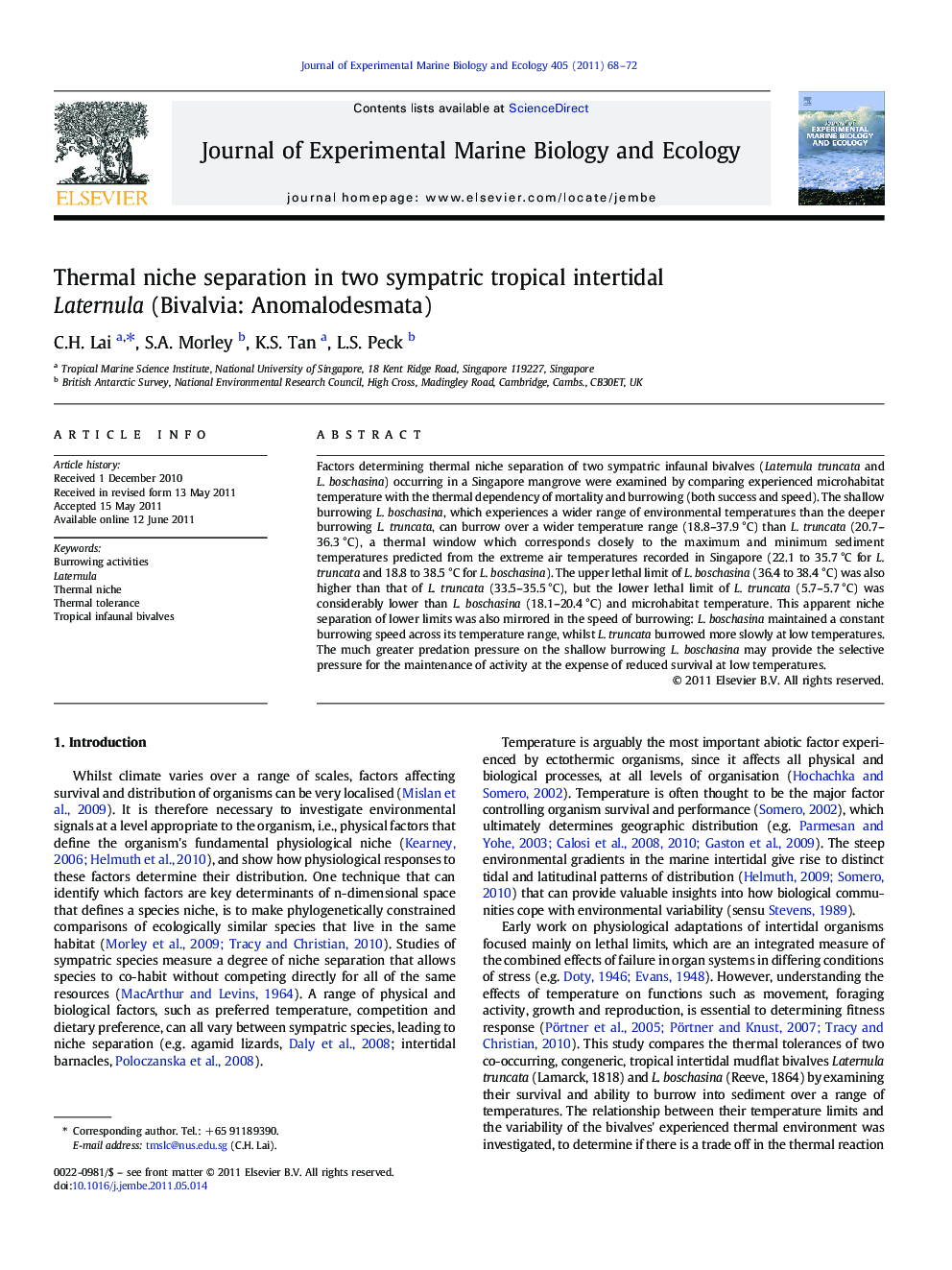| Article ID | Journal | Published Year | Pages | File Type |
|---|---|---|---|---|
| 4396256 | Journal of Experimental Marine Biology and Ecology | 2011 | 5 Pages |
Factors determining thermal niche separation of two sympatric infaunal bivalves (Laternula truncata and L. boschasina) occurring in a Singapore mangrove were examined by comparing experienced microhabitat temperature with the thermal dependency of mortality and burrowing (both success and speed). The shallow burrowing L. boschasina, which experiences a wider range of environmental temperatures than the deeper burrowing L. truncata, can burrow over a wider temperature range (18.8–37.9 °C) than L. truncata (20.7–36.3 °C), a thermal window which corresponds closely to the maximum and minimum sediment temperatures predicted from the extreme air temperatures recorded in Singapore (22.1 to 35.7 °C for L. truncata and 18.8 to 38.5 °C for L. boschasina). The upper lethal limit of L. boschasina (36.4 to 38.4 °C) was also higher than that of L. truncata (33.5–35.5 °C), but the lower lethal limit of L. truncata (5.7–5.7 °C) was considerably lower than L. boschasina (18.1–20.4 °C) and microhabitat temperature. This apparent niche separation of lower limits was also mirrored in the speed of burrowing: L. boschasina maintained a constant burrowing speed across its temperature range, whilst L. truncata burrowed more slowly at low temperatures. The much greater predation pressure on the shallow burrowing L. boschasina may provide the selective pressure for the maintenance of activity at the expense of reduced survival at low temperatures.
Research highlights► Thermal limits of 2 tropical congeneric bivalves in the same habitat were examined. ► Both upper and lower limits for survival and burrowing activity were explored. ► Upper thermal limit and burrowing speed mirror the burial depth of the bivalves. ► Lower limit of L. truncata was much lower than temperature range in microhabitat. ► Thermal niche separation may be driven by both temperature and predation
